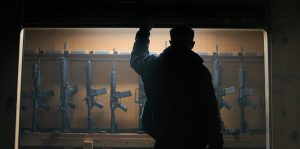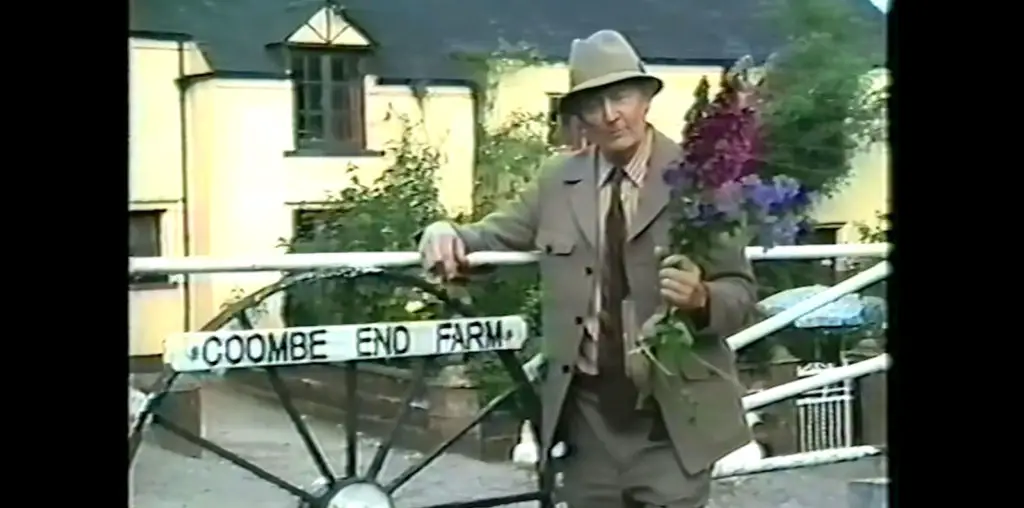
At a time when most movies are begging on their hands and knees for your adoration, Henry Dunham’s The Standoff at Sparrow Creek takes on the qualities of a wallflower. It doesn’t come to you, and it doesn’t really care if you come to it. There is no emotional manipulation, and there are no ideological hand-outs. You almost feel like you’re watching the events unfold through a keyhole, which gives every hushed exchange and passive-aggressive examination a voyeuristic thrill.
Everything begins with a shooting at a police funeral and the vanishing of the shooter. This sends the nearby area into an all-out manhunt, but we only gather this through fuzzy audio on a ham radio. This is because we’re placed in the bubble of a seemingly abandoned warehouse, which is actually the headquarters of a private militia. Due to the shooting, the militia assembles and discovers that not only has the shooter been identified as a militiaman, but that one of the guns in their armory is missing. The case is afoot. Cue the side-eye and the clammy palms.

“Everything begins with a shooting at a police funeral and the vanishing of the shooter.”
As with the best whodunits, Dunham understands that the investigation is where the meat of the story lays, not the big reveal. After all, there are only so many variations to “it was so-and-so with the such-and-such in the what’s-it-called.” Additionally, the reveal is a single, disposable moment, whereas the investigation takes up the majority of the story and, if done right, holds up with repeated viewings. The Standoff at Sparrow Creek nails this through the hollow atmosphere of the warehouse – which gives every bit of compact dialogue a second life as it bounces from one distant wall to the other – and the living watch list of the militiamen, each of whom seems to be on the verge of hurting himself or hurting someone else.

“…the investigation is where the meat of the story lays, not the big reveal.”
We get to know the men as Gannon (James Badge Dale), a former cop, volunteers to interview each one until he gets a confession. What we find are a group of antisocial individualists who have probably burned their driver’s licenses and buried their savings under a garden gnome. And yet, here they are, part of an organization they’ve willingly joined—a pack of lone wolves. Like some of our other primal impulses, the desire for community always seems to rise to the surface. Peeling back the layers on these guys is consistently rewarding, especially since they’re made up of not a single star, but conditioned character actors like Gene Jones and Chris Mulkey. They take Dunham’s unceremonious, precise writing and keep it alive through the quiet moments.
If you ask me, the years between ’67 and ’74 were as good a time for movies as we’ve gotten, and maybe ever will get. The musty shackles of an old studio system were shed and mainstream movies got insular, unruly, and weird. The Standoff at Sparrow Creek doesn’t feel too far removed from that era. Sure, its stagnant progression and lack of guidance will leave some feeling shortchanged, but who cares? If you’re not turning people off, you’re not turning people on.

The Standoff at Sparrow Creek (2019)Written and Directed by Henry Dunham. Starring James Badge Dale, Brian Geraghty, Patrick Fischler, Happy Anderson, Robert Aramayo, Gene Jones, Chris Mulkey.
8 out of 10 stars

